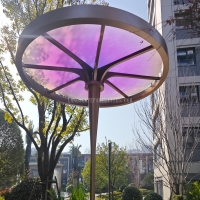Welcome to the website for landscape facilities products and knowledge.
How do landscape tables perform in terms of load distribution on different surface types like grass or decking?
Landscape tables are a popular choice for outdoor settings, but their performance in load distribution varies depending on the surface they are placed on. Understanding how these tables behave on grass or decking can help users make informed decisions for stability and longevity.
On grass surfaces, landscape tables may experience uneven load distribution due to the soft and uneven nature of the ground. The legs of the table can sink slightly into the soil, especially after rain, leading to potential wobbling or instability. To mitigate this, tables with wider legs or adjustable feet are recommended to distribute weight more evenly and prevent sinking.
In contrast, decking surfaces provide a more stable and level foundation. Hardwood or composite decking offers consistent support, allowing the table to distribute weight uniformly. However, prolonged exposure to moisture on decking can cause warping or damage to both the table and the deck over time. Using protective pads or coasters under the table legs can help prevent this issue.
Material choice also plays a critical role. Heavy-duty materials like powder-coated steel or treated wood perform better on grass, while lighter materials like aluminum or plastic are more suited for decking. Additionally, regular maintenance, such as checking for leg adjustments or surface wear, ensures optimal performance.
In summary, landscape tables perform differently on grass and decking surfaces. Grass requires tables with broader support to avoid sinking, while decking benefits from even weight distribution and protective measures. Choosing the right table and taking preventive steps can enhance durability and user experience in any outdoor setting.
Related search:

Recommendation
Metal frame with gradient color acrylic combined with high-end shading landscape facilities